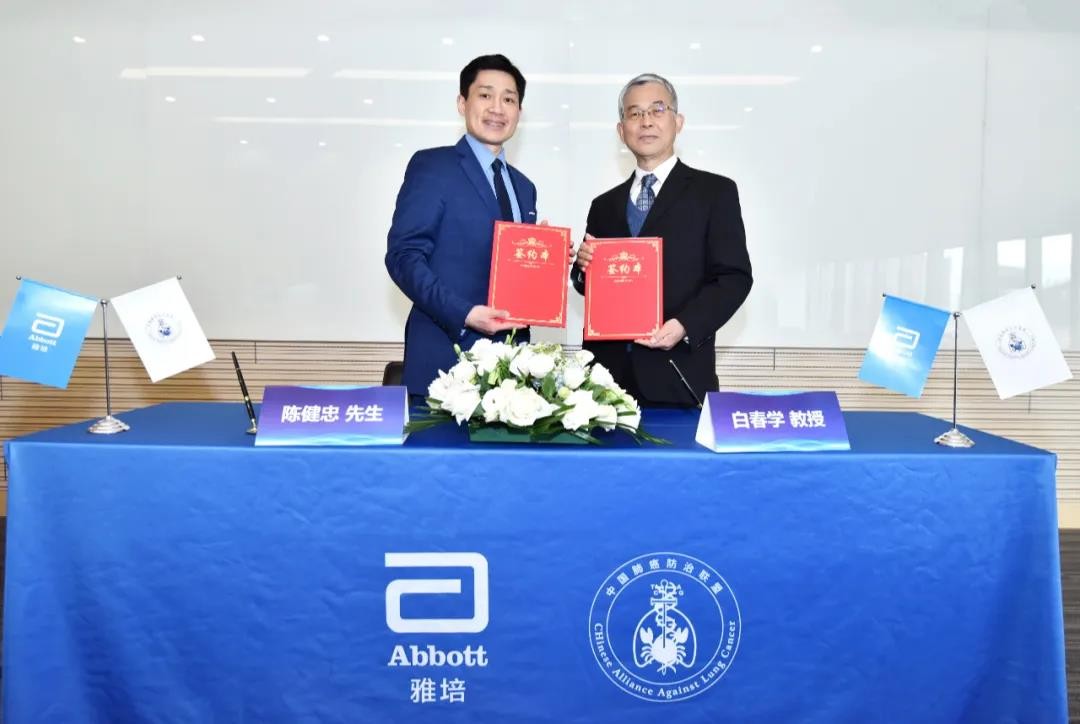
Abbott and China Lung Cancer Prevention Alliance Reached Strategic Cooperation
2020/12/23 17:25:42 Views£º1217
On December 19, at the 16th International Respiratory Symposium in Changshu, Abbott announced that it had joined the International Smart Health Alliance and signed an important strategic cooperation with the China Lung Cancer Prevention Alliance.
Lung cancer is the number one malignant tumor in China in terms of morbidity and mortality. The burden of lung cancer in China is particularly serious. According to statistics, as of 2019, the 5-year survival rate of lung cancer patients in my country is about 19.7%, which is lower than the level of the United States and Japan 20 years ago. The high survival rate of lung cancer patients in developed countries such as the United States and Japan is mainly due to early screening. The study found that the 5-year survival rate of patients with stage I lung cancer can reach more than 90%, while that of stage III-IV is less than 10%. Moreover, the cost of early treatment is much lower than the cost of targeted drug treatment for advanced lung cancer. Therefore, early diagnosis can bring significant benefits in terms of improving the survival rate of lung cancer patients and saving treatment costs.
The LCBP model was jointly developed by Abbott Diagnostics and Professor Bai Chunxue, Chairman of the China Lung Cancer Prevention Alliance, and many well-known experts in the field of respiratory diseases, and established a lung cancer diagnostic model suitable for the Chinese population for the first time. The LCBP model not only incorporates lung cancer risk factors such as age, gender, smoking history, and CT information, but also uniquely incorporates gastrin releasing peptide precursor (ProGRP), carcinoembryonic antigen (CEA), and cytokeratin 19 fragment (CYFRA21- 1) The four Abbott lung cancer serum markers and squamous cell carcinoma antigen (SCC) make the diagnostic performance superior to other models such as ACCP recommended by the United States, which can better judge the benign and malignant lung nodules and reduce benign nodules. It is necessary for patients to undergo invasive examinations, while optimizing the rapid diagnosis of patients with malignant nodules (lung cancer) to ensure that they receive early treatment.
Chen Jianzhong, Vice President of Abbott Diagnostics, said: ¡°Abbott¡¯s LCBP lung cancer risk model is currently an effective tool for the diagnosis and treatment of lung cancer. It provides clinicians with an important reference when diagnosing lung cancer. We believe that this cooperation is the value of Abbott¡¯s expansion of the LCBP model. This important step will help China's lung cancer prevention and treatment reach the world's leading level. At the same time, through the integration of Internet medical platforms, the LCBP model can be more widely used, enabling early screening and early diagnosis of lung cancer in China, and bringing more Chinese patients with hope."

- CAIVD WeChat
Subscription Account

- CAIVD WeChat
Channels
China Association of In-vitro Diagnostics
Part of the information in our website is from the internet.
If by any chance it violates your rights, please contact us.

